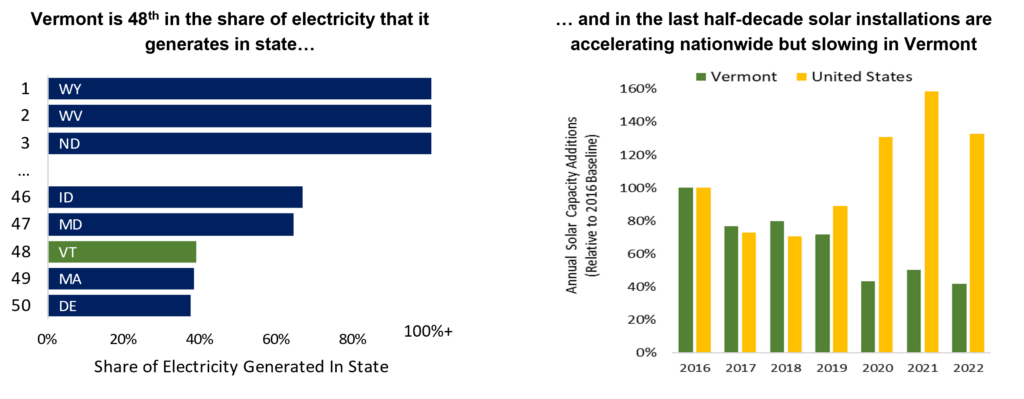Over the last half-decade, the process of permitting renewable energy projects has become increasingly unpredictable. Today, the process is impeding the deployment of renewable generating capacity, blunting climate mitigation efforts, and raising the cost to consumers of transitioning to clean, renewable energy.
We must electrify the transportation and thermal sectors to meet our legally binding commitments under the Global Warming Solutions Act. This will create new electricity demand which must be met with electricity from new renewable sources. Despite that, Vermont today ranks 48th nationally in the share of its electricity consumption that is generated within the state. Solar installations are lagging in Vermont while growing nationwide.

REV’s report, No Good Reason: Vermont’s Regulatory Roadblocks to Renewable Energy and Our Fight Against Climate Change, details the challenges of building renewable energy facilities in Vermont. The report presents 10 recent permitting case studies demonstrating three barriers to permitting new renewable energy projects that are increasing in frequency:
- lack of timeliness in the review process
- the inconsistent application of existing rules
- highly subjective evaluation criteria
The report proposes solutions to provide more consistency and predictability to the permitting process. These solutions will protect the public interest, our natural resources and allow Vermont to meet its statutory commitment to reducing greenhouse gas emissions by supporting new, responsible renewable energy development. These solutions include:
- mandating the development of clear and binding timelines for PUC decisions
- clarifying statutes to make the process for permitting renewables more objective and predictable
- amending the aesthetic assessment process so the burden to demonstrate an undue impact aligns with Act 250
